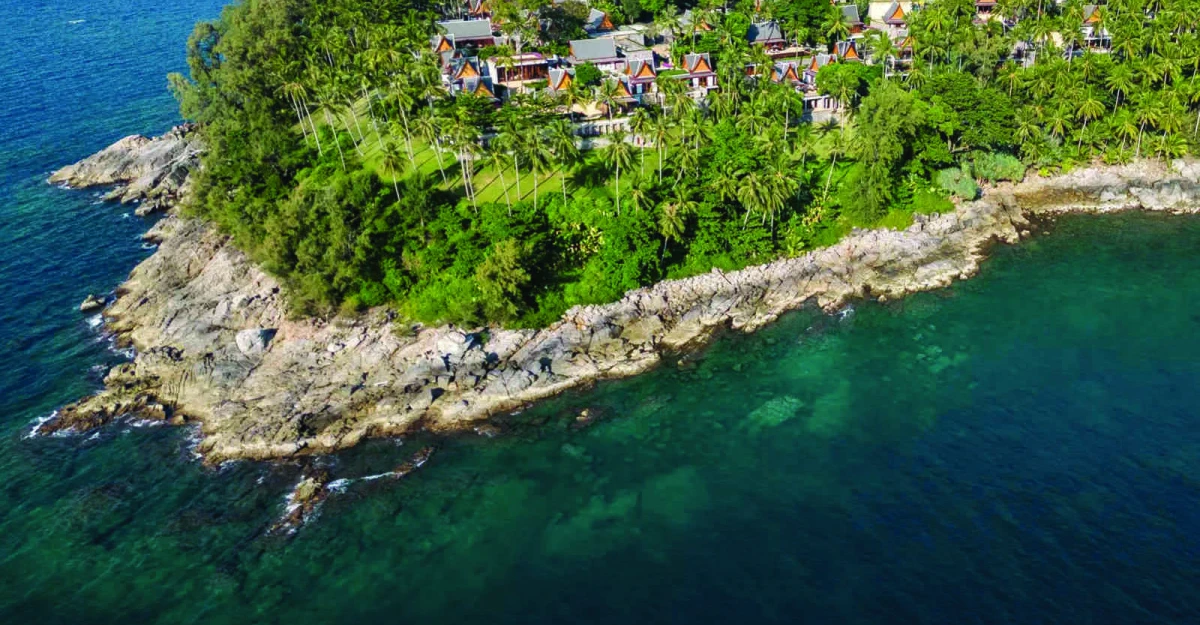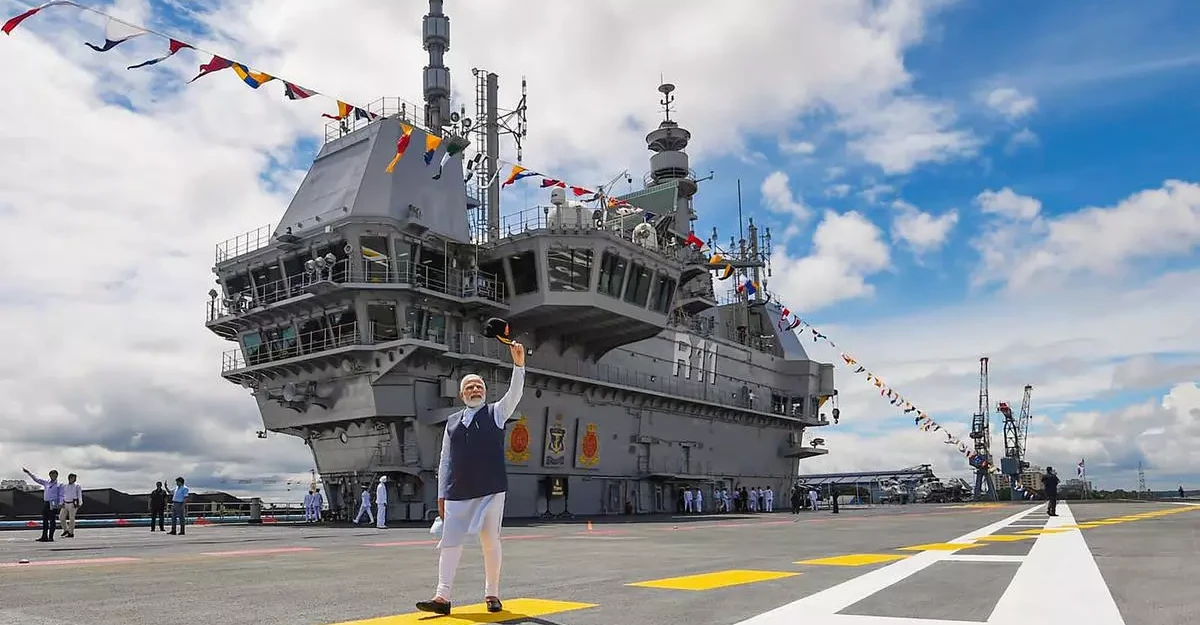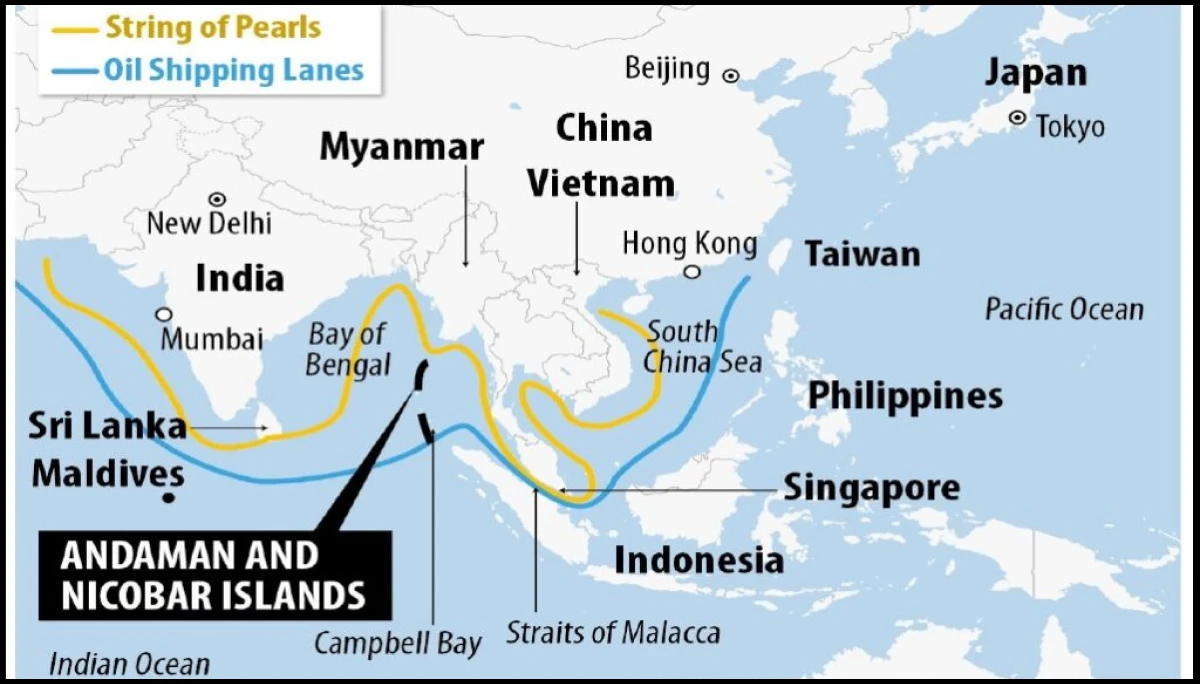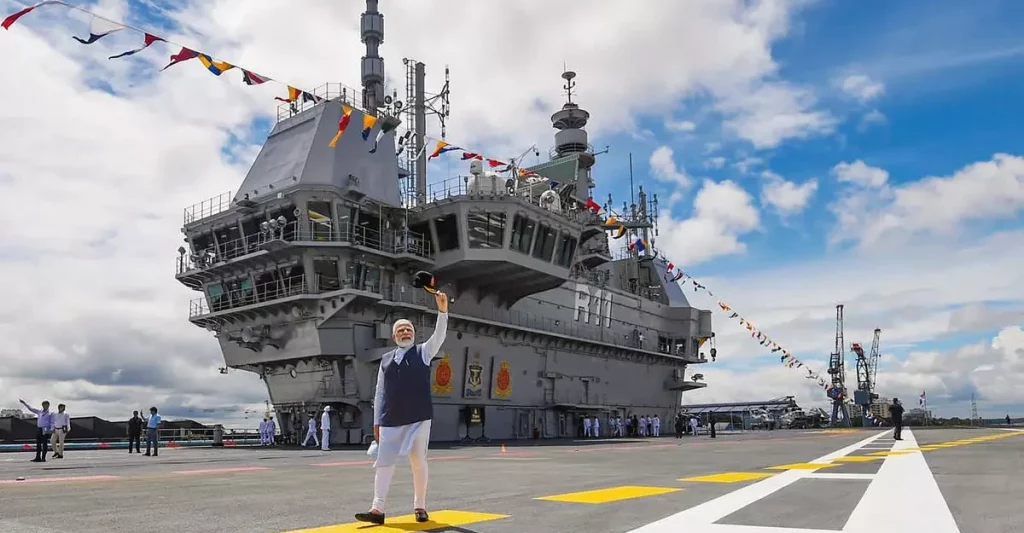The Great Nicobar Naval Base is one of the most significant projects our country plans on Nicobar Island. As you know it is a part of the Andaman and Nicobar Islands, so this naval base is gonna be a crucial foundation for Indian Navy!

In the language of geopolitics, the stronger your defense system is… the more powerful you are!
So, in this write-up, we will get into the details of the Great Nicobar Naval Base and discuss India’s plans with it.
Stay tuned!
(A) Synopsis
The Indian government is quietly setting up a major naval base on Great Nicobar Island. It’s strategically placed right by the entrance to the Malacca Straits and just a quick 90 miles from Indonesia.
Think of it like a chess move. India is shifting its queen (aka the naval base) into play, and it’s not just for show. This move is a direct check to the opposing king, or in real-world terms, a bold move to keep tabs on what China’s up to in the Indian Ocean.
Why is this such a big deal?
Well, this naval base is like a key player in India’s oceanic strategy. It’s a smart move to counter China’s actions in the Himalayas. This base could shake things up and bring a whole new dynamic to the region.
Let’s look into the project of the Great Nicobar Naval Base with some crucial facts–
(A.1) Project Components
| Components | Description |
| Transshipment Port | A ₹35,000 crore transshipment port will be constructed at Galathea Bay. |
| Dual-Use Airport | The project includes a dual-use military-civil international airport. |
| Power Plant | A power plant will be established. |
| Township Development | Over 30 years, a township will be built on more than 160 sq. km of land, with 130 sq. km being primary forest. |
(A.2) A Brief Context of the Island
| Particulars | Details |
| Location | Great Nicobar Island lies about 800 miles east of Chennai, India, and only 93 miles northwest of Aceh, on the Indonesian island of Sumatra. |
| Population | Between 100 and 400 Shompen people inhabit this thickly forested 900 sq km (350 sq mile) island. |
| Shompen Tribe | The Shompen are hunter-gatherers who rely on the rainforest for their existence. They have minimal contact with the outside world and are highly isolated. |
| Concerns | Academics from around the world have expressed alarm, warning that the project could be “a death sentence” for the Shompen. They fear that if the project proceeds, even in a limited form, it would be tantamount to the international crime of genocide. The Shompen could be vulnerable to diseases if they come into contact with outsiders. |
(A.3) Government’s Stance
- The government views the project as vital for security and defense, given Great Nicobar’s strategic location in the Indian Ocean. It serves as a countermeasure against China’s growing presence in the region.
- The island, along with the Andaman Islands, lies on one of the world’s busiest sea routes.
- While the project aims for development, concerns remain about its impact on the unique ecology, habitat of vulnerable tribal groups, and the future of the Shompen and Nicobarese people.
In short, the Great Nicobar Naval Base project is an ambitious plan of India to enhance the defense forces along with development. However, it raised a matter of concern regarding the protection of indigenous communities and fragile ecosystems. This sounds quite challenging. Isn’t it? Therefore, India will go with a balanced approach to upgrading the defense forces while preserving the indigenous tribes.
(B) Great Nicobar Naval Base: Navigating Maritime Dominance

Nestled on the largest island of the Nicobar group within the Andaman and Nicobar Islands, the Great Nicobar Naval Base, operational since its commissioning on July 31, 2012, stands as a pivotal military installation under the joint-services Andaman and Nicobar Command (ANC) of the Indian Armed Forces.
Its strategic significance lies in its role in ensuring India’s maritime security and exerting influence in the region.
(B.1) Location and Purpose
Known as INS Baaz, the base strategically sits near Campbell Bay on Great Nicobar Island, providing a commanding view of both the Strait of Malacca and the Six Degree Channel. Its primary purpose revolves around monitoring and safeguarding India’s interests in the Indian Ocean region, with a particular emphasis on overseeing China’s activities along the Malacca Strait.
(B.2) Operational Preparedness
As the southernmost air station of the Indian Armed Forces, INS Baaz plays a critical role in enhancing India’s operational capabilities. Beyond its strategic vantage point for surveillance and reconnaissance, the base is designed to facilitate rapid response capabilities, contributing significantly to India’s ability to address security threats promptly.
(B.3) Geopolitical Significance
The Great Nicobar Naval Base plays a pivotal role in reinforcing India’s presence within the Indian Ocean, a region of critical maritime importance. Its establishment strengthens India’s position vis-à-vis other regional players, emphasizing the nation’s commitment to maintaining stability and security in the broader geopolitical landscape.
(B.4) Challenges and Opportunities
Operating in this remote and ecologically sensitive area presents unique challenges for the Great Nicobar Naval Base. However, these challenges also offer opportunities for scientific research, environmental conservation, and disaster response, adding a multifaceted dimension to its role and impact.
Thus, the Great Nicobar Naval Base represents India’s commitment to securing its maritime interests and playing a proactive role in regional stability. Its establishment underscores not only the nation’s forward-looking defense preparedness but also its responsibility as a significant actor in the Indo-Pacific theater.
The base, with its strategic positioning and multifunctional capabilities, adds a crucial layer to India’s maritime prowess and geopolitical influence.
(C) Key Details of the Project Great Nicobar Naval Base

Now let’s delve into the details of the Great Nicobar Naval Base-
(C.1) Strategic Significance of the Location
Imagine standing on the strategically vital Great Nicobar Island, nestled in the Andaman and Nicobar Islands in the vast Indian Ocean. It is approximately 800 miles east of Chennai, India, and just a mere 93 miles northwest of Aceh, on the Indonesian island of Sumatra.
Now, why is it such a big deal?
Well, this base is not just a spot on the map; it’s a crucial player in India’s security and defense strategy, thanks to its proximity to major sea routes and its role in countering China’s expanding presence in the region.
(C.2) Components of the Great Nicobar Naval Base Project
Get ready for some mind-blowing components! A whopping ₹35,000 crore transshipment port is in the works at Galathea Bay, facilitating the smooth movement of goods between ships. That’s not all – a dual-use airport is on the horizon, serving both military and civilian purposes, and boosting connectivity to the island.
Hold your breath; a power plant is in the plan to meet the energy needs of the base and the surrounding area.
Over the next 30 years, a whole township covering more than 160 sq. km will emerge, providing infrastructure, housing, and facilities for the incredible personnel stationed there. An awesome climax is waiting! Isn’t it?
(C.3) Ecological and Social Concerns
Let’s talk about the Shompen tribe, an indigenous group of hunter-gatherers calling Great Nicobar Island home. They’re tucked away in the rainforest, living a unique life.
Here’s the concern- experts are waving red flags, fearing that this project could be a “death sentence” for the Shompen. Any outside contact might expose them to diseases, jeopardizing their existence.
Some even argue that going ahead with the project could be considered an international crime – genocide against the Shompen.
And don’t forget the island’s thick rainforest and unique ecology; they’re at risk too due to this grand development.
(C.4) Balancing Development and Preservation
It’s a tightrope walk for the government. Yes, the project is vital for security, but it must delicately balance progress with the preservation of indigenous communities and fragile ecosystems.
The future of the Shompen and Nicobarese people, along with the island’s biodiversity, hangs in the balance.
In a nutshell, the Great Nicobar Naval Base project is a thrilling, yet intricate challenge. India aims to boost its strategic capabilities while ensuring the delicate environment and the well-being of its inhabitants are safeguarded.
(D) Understanding India’s Plans with Great Nicobar Naval Base
Here comes the core part of this write-up. Why India is working so hard on the creation of the Great Nicobar Naval Base? Well, we all know that it is mainly for defense purposes but still, why there is so much buzz around it? You may wonder.
Look, India’s objectives for creating the Great Nicobar Naval Base are multifaceted and strategic.
We have explained them in the following table-
| Key Objectives | Aspects | Details |
| Security and Defense | Strategic Location | Great Nicobar Island’s position in the Indian Ocean makes it a crucial asset for India’s security. It lies on one of the world’s busiest sea routes. |
| Counter China’s Influence | The base serves as a countermeasure against China’s growing presence in the region. China has been expanding its naval capabilities, and India aims to maintain a strong foothold in the Indian Ocean. | |
| Enhanced Maritime Capabilities | Sea Lanes of Communication | The island’s proximity to major sea routes allows India to monitor and secure critical sea lanes of communication. |
| Naval Operations | The base facilitates naval operations, including surveillance, patrolling, and rapid response to any threats in the region. | |
| Geostrategic Significance | Choke Points | The Indian Ocean has several choke points, and Great Nicobar Island lies near the Malacca Strait, a vital passage connecting the Indian Ocean to the Pacific. Controlling this area enhances India’s influence. |
| Geo-Political Leverage | Having a strong naval presence in the region provides India with geopolitical leverage and strengthens its position in international affairs. | |
| Humanitarian Assistance and Disaster Relief | HADR | The base can serve as a hub for HADR operations during natural disasters. Its location allows for swift response and aid delivery to neighboring countries. |
| Economic Interests | Boosting Trade | The planned transshipment port at Galathea Bay will boost India’s trade and connectivity in the region. |
| Dual-use Airport | The dual-use airport will enhance connectivity for both military and civilian purposes. | |
| Balancing Development and Preservation | Preserving Ecology | India aims to strike a balance between development and preservation. While the project is essential for security, concerns remain about its impact on the unique ecology and the indigenous Shompen tribe. |
That’s how, the Great Nicobar Naval Base represents India’s commitment to safeguarding its maritime interests, ensuring regional stability, and maintaining a strong presence in the Indian Ocean. However, achieving these objectives while respecting ecological and social sensitivities remains a challenge.
(E) Exploring India’s Strategic Moves in Andaman and Nicobar Islands
Now, let’s look at some of the strategic steps taken by India in the Andaman and Nicobar Islands till now-
(E.1) Unveiling the Dormant Archipelago
For years, the Andaman and Nicobar Islands (ANIs), strategically positioned at the crossroads of the Bay of Bengal and Andaman Sea, seemed dormant. However, with China making bold moves near border areas, India’s focus shifted. Fast forward to 2023, and New Delhi is in the advanced stages of constructing a naval base to counter China’s expanding influence.
(E.2) ANI’s Strategic Significance
Encompassing 572 islands across 450 nautical miles with 24 ports, ANIs play a pivotal role in New Delhi’s Indian Ocean Region (IOR) strategy. Its proximity to the ‘Strait of Malacca’ chokehold makes it a key player in countering China’s ‘String of Pearls’ strategy.
(E.3) Manning the Chokehold
ANIs’ northernmost point is a mere 22 nautical miles from Myanmar, while the southernmost point is just 90 nautical miles from Indonesia. Approximately 70,000 ships passing through the ‘Strait of Malacca’ and the Six Degrees channel near ANIs make this region critical. This strategic waterway is vital for China, with 80% of its oil supplies passing through it.
(E.4) Geopolitical Maneuvers

New Delhi has strategically countered China’s moves in various regions. By securing the Chahbahar port in Iran, India neutralized China’s grip over the Gwadar port in Pakistan. Engagements in Sri Lanka and the Maldives further showcase India’s ability to navigate geopolitical challenges.
(E.5) Developing Military Presence
The Andaman and Nicobar Command (ANC), the only tri-service theatre command of the Indian Armed Forces, underscores the region’s significance. With seven Air Force and Navy bases, a Rs 5,650 crore military infrastructure development plan is underway.
Extensions to runways at INS Kohassa and INS Baaz will enable the operation of maritime surveillance aircraft, infantry soldiers, missile batteries, warships, and drones.
(E.6) China’s Proximity
Despite India’s military developments, caution is essential due to China’s presence in the vicinity, particularly the Great Coco and Little Coco Islands. Formerly under India’s control, these islands are now held by China, with reports indicating their use for spying on India’s defense programs.
Note: When it comes to India vs China, we have thoroughly compared their economies in the article- “India vs China Economy: Which is better placed for Growth?”
(E.7) Greater Nicobar Islands Development
Under the ‘Holistic Development of Great Nicobar Islands in Andaman and Nicobar Islands’ project, India envisions an International Container Transhipment Terminal (ICTT), an international airport, a township, and a power plant for Greater Nicobar. Beyond geopolitical gains, the development aims at holistic progress.
(E.8) ANIs in the Indo-Pacific Region
The ANIs, if strategically utilized, have the potential to bind the Indo-Pacific and align with the Quad to counter China’s influence in the South China Sea. The complex interplay of geopolitical and military strategies in this region signifies India’s proactive stance in navigating the evolving power dynamics.
(F) Wrap-Up: A Bright Future with the Great Nicobar Naval Base
In conclusion, the Great Nicobar Naval Base is India’s strategic gem in the Indian Ocean. Positioned strategically, it safeguards vital sea routes and counters regional challenges. India envisions a multifaceted development plan for Great Nicobar, encompassing military strength, infrastructure, and ecological sensitivity. This base plays a crucial role in India’s maritime security, enhancing its influence in the Indo-Pacific region.
As India navigates a delicate balance between development and preservation, the Great Nicobar Naval Base stands as a testament to the nation’s commitment to regional stability and responsible geopolitical engagement.

